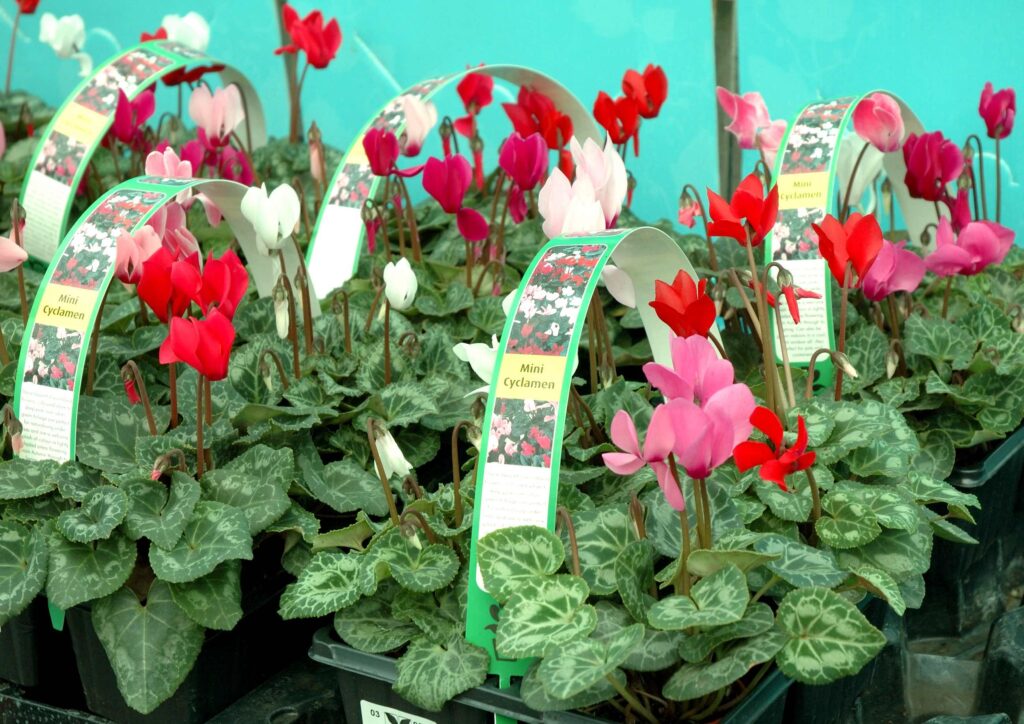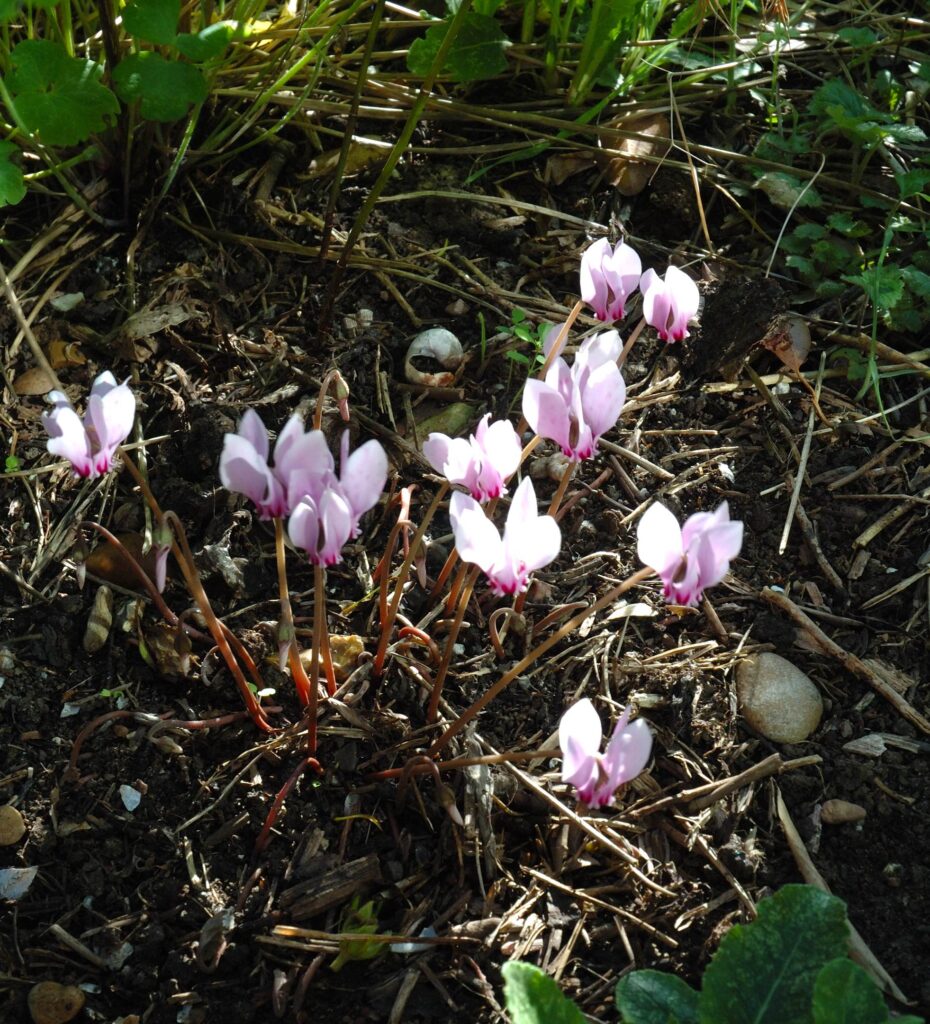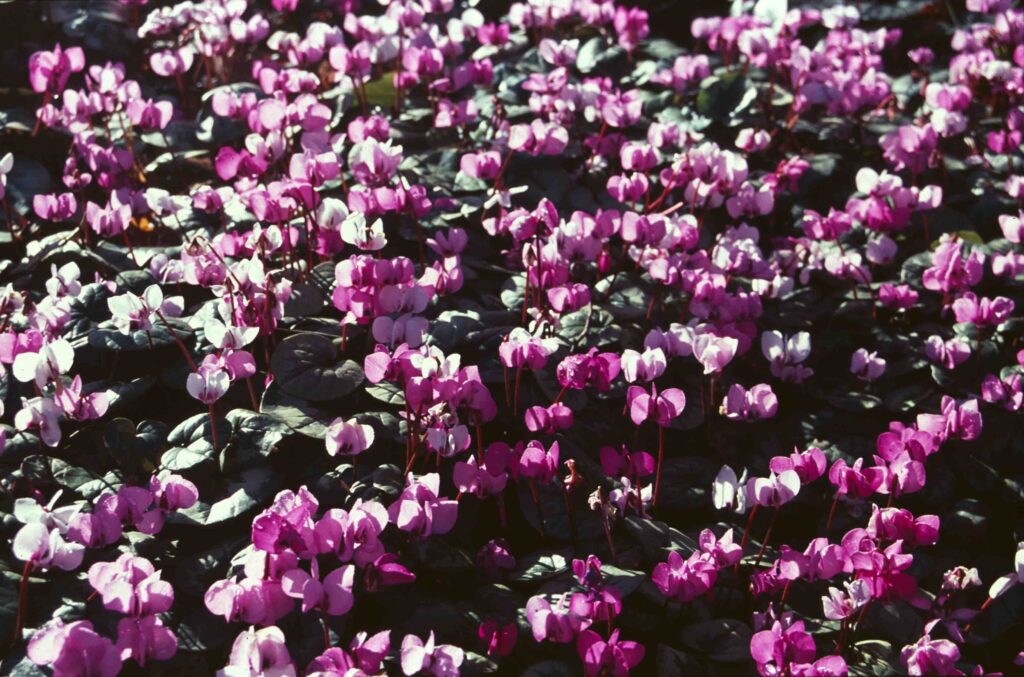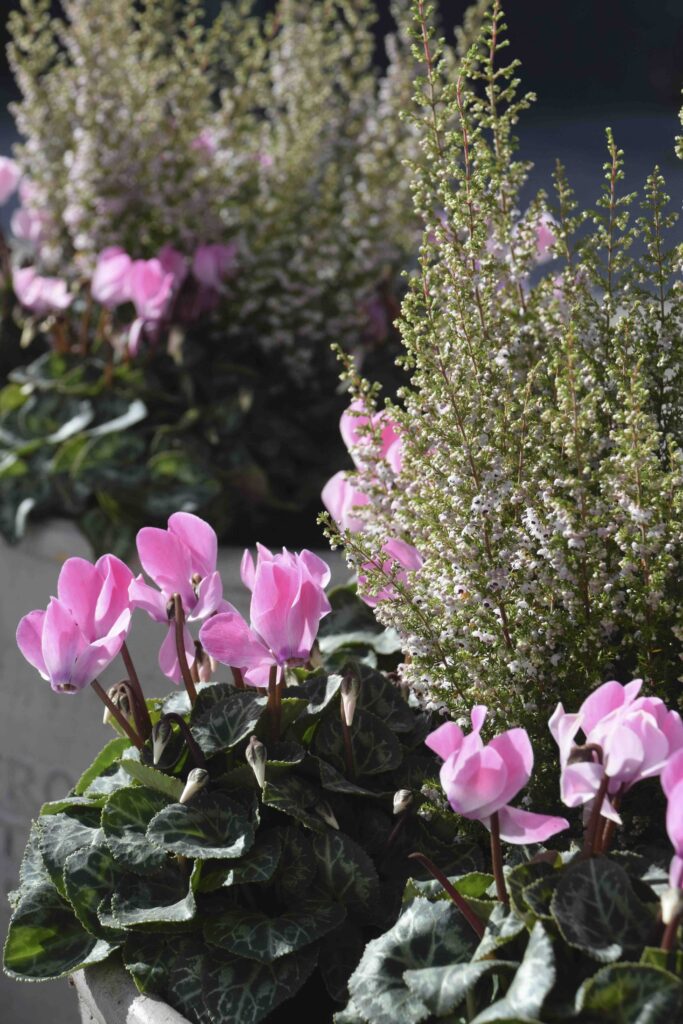
If you wander into the covered plants area at Knights this week you will be greeted by a mass of colour from delicate cyclamen and wafts of their sweet fragrance. These affordable and charming plants are a relatively new development but hugely popular for winter pots and window boxes. They are often sold as ‘hardy’ cyclamen but this needs a little explanation.
So I need to take a step back and explain a little about cyclamen in general. Bear with me!
Difficult as it is to imagine, cyclamen are related to primroses. The dozen or so species are generally native to Southern Europe where they hide as woody tubers in the dry heat of the summer, blooming and coming into leaf in winter after autumn rains. Two truly hardy species, from Northern Europe, are commonly grown in our gardens. These are Cyclamen hederifolium and Cyclamen coum.

Cyclamen hederifolium is dormant in summer and the flowers appear from August. The leaves appear as the flowers finish and remain all winter till May. It can be bought as dry tubers but it is best to buy growing plants in pots now. It is a wonderful plant for dry shade under trees.

Cyclamen coum is similar but has rounded leaves and dainty flowers that open in the depths of winter, in January and February, dying back in May.

Back to our mini cyclamen
The most familiar cyclamen of all is the frost-tender Cyclamen persicum, native to the Eastern Mediterranean area. It was introduced to Europe in 1620 and breeding was started in the 1860s in England to make the large-flowered kinds that became a Christmas favourite. Flowers were made bigger and brighter over the following century. But recently plant breeders created small, tougher kinds that can be used outside. These are plants that just did not exist thirty years ago.
These ‘mini’ or ‘hardy’ cyclamen are compact, often sweetly scented and flower for many months. But they are not as hardy as the truly hardy kinds I mentioned above.
Cyclamen need a bright, airy spot and they hate stagnant air and moisture around the base of the foliage – it is why it is often said you must water pot cyclamen from below on the windowsill.
Our mini cyclamen will withstand a light frost but, if crammed together, in wet, dull weather outside water will collect around soil level and rot will set in. This rot is more likely to kill the plants than cold alone. Even so, plants are at their best before the New Year and they usually slowly collapse after that.
So how can you use them?

They are perfect for pots on the patio or for window boxes. They will provide colour and scent. Combine them with chrysanthemums, heucheras, heathers and violas for autumn colour. You will find an extensive range of plants to create imaginative patio pots at Knights.
The cyclamen will last longer if there is some overhead cover such as a porch or when they are in window boxes.
if the plants collapse in the New Year simply remove them from the pots and replace them with some primroses or violas, or pots of bulbs.

Try to avoid cramming them in too closely and make sure, when planting, that they are not planted too deeply, ideally so the top of the small tuber is at soil level. Deep planting will cause the plants to rot.

You can also keep them in the home or in a cold greenhouse or conservatory. They will be best in a cool or cold room in bright light or even direct sun (in winter). Here you can ensure the foliage is dry, water carefully and enjoy them for many months. They will fragrance the room and usually last till spring. In fact they often continue growing all summer and can be kept for many years. I like to have a row of them on my dining room windowsill in winter, in complementary colours.
In the garden, they may survive winter in sheltered coastal or urban gardens but they are not reliably perennial outside.
But they are inexpensive and beautiful. They are great value and add grace and colour to autumn pots. You can add some to your patio this weekend.
If you are replacing faded summer plants and you used fresh compost this spring you do not need to replace the compost. Pull up the old summer plants and add them to the compost heap. Mix some controlled-release fertiliser to the existing compost in the pot to add nutrients to the compost. Add a little fresh compost on top and plant your autumn plants.
Have fun
Wildlife Talk
I am delighted to be back to give my last talk of the year this week. The topic is about making your garden a haven for wildlife. Booking is required and tickets cost from £5. I look forward to seeing you there. https://www.knightsgardencentres.com/webshop/events/talks-workshops